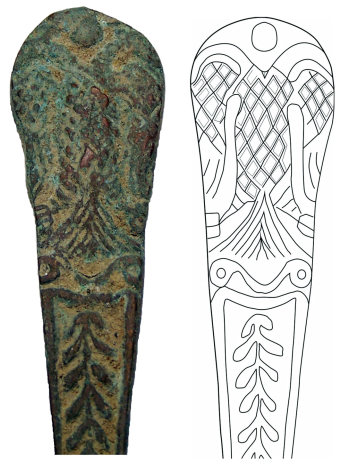
Three copper alloy spoons from the Peloponnese (14th – 16th centuries)
Abstract
The need for consumption of liquid foods, especially by vulnerable groups (infants, the sick, the elderly), has contributed to the long-term use of spoons. In the Middle Ages, eating with the use of one’s fingers was the most common way. However, spoons, in addition to their practical use, when made of metal, were treated as investment goods and symbols of social rank. A copper alloy spoon from the Frankish castle of Chlemoutsi with a double-headed eagle at the tip of its handle, and two more samples from the church of Hagios Petros of Kastania in Western Mani correspond to types known in the late Antiquity, which vary in typology and are found in a wide geographical range in the late Middle Ages.
Keywords
Full Text:
PDFDOI: http://dx.doi.org/10.26247/aura4.3
Refbacks
- There are currently no refbacks.
ISSN: 2623-3428 (digital), 2623-3436 (print)
© 2018-2020 National and Kapodistrian University of Athen, Department of History and Archaeology.



